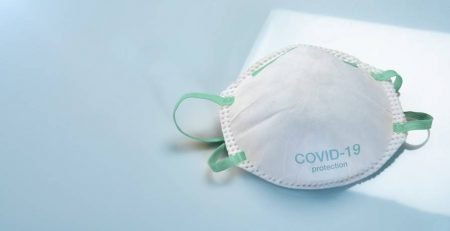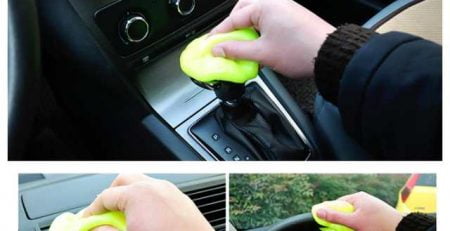Wie wählt man FFP2-, KN95- und N95-Masken aus?

Filtering facepiece respirators (FFR), which are sometimes called disposable respirators, are subject to various regulatory standards around the world.
These standards specify specific required physical properties and performance characteristics for respirators to claim compliance with the particular rule.
During pandemic or emergencies, health authorities often reference these standards when making respirator recommendations, stating, for example, that specific population should use an “N95, FFP2, or equivalent” respirator.

This document is only intended to help clarify some key similarities between such references, specifically to the following FFR performance standards:• N95 (USA NIOSH-42CFR84)
• FFP2 (Europa EN 149-2001)
• KN95 (China GB2626-2006)
• P2 (Australia/New Zealand AS/NZA 1716:2012)
• Korea 1st class (Korea KMOEL – 2017-64)
• DS (Japan JMHLW-Benachrichtigung 214, 2018)
As shown in the following summary table, respirators certified as meeting these standards can be expected to function very similarly to one another, based on the performance requirements stated in the rules and confirmed during conformity testing.
One notable comparison point is the flow rates specified by these standards for the inhalation and exhalation resistance tests. Inhalation resistance testing flow rates range from 40 to 160L/min. Exhalation resistance testing flow rates vary from 30 to 95 L/min. Some countries require testing to be performed at multiple flow rates, others at only the high or low end of those ranges. Although this appears to suggest that the standards’ requirements for breathing resistance (also called “pressure drop”) differ from each other, it’s essential to understand that pressure drop across any filter will naturally be higher at higher flow rates and lower at lower flow rates. Given typical pressure curves for respirator filters, the standards’ various pressure drop requirements are actually quite similar.

This chart shows a representative filter pressure drop curve.
If one filter is tested at a high flow rate, the pressure drop performance will be relatively high. If that same filter is tested at a low flow rate, the pressure drop performance will be relatively small.
Based on this comparison, it is reasonable to consider China KN95, AS/NZ P2, Korea 1. Klasse, and Japan DS FFRs as “equivalent” to US NIOSH N95 and European FFP2 respirators, for filtering non-oil-based particles such as those resulting from wildfires, PM 2.5 air pollution, volcanic eruptions, or bioaerosols (e.g., viruses).
However, before selecting a respirator, users should consult their local respiratory protection regulations and requirements or check with their local public health authorities for selection guidance.
The following is the comparison of FFP2, KN95, And N95 parameters.
| Certification/ Class (Standard) | N95 (NIOSH-42C FR84) | FFP2 (EN 149-2001) | KN95 (GB2626-20 06) | P2 (AS/NZ 1716:2012) | Korea 1st Class (KMOEL – 2017-64) | DS (Japan JMHLWNotification 214, 2018) |
| Filter performance – (must be ≥ X% efficient) | ≥ 95% | ≥ 94% | ≥ 95% | ≥ 94% | ≥ 94% | ≥ 95% |
| Test agent | NaCl | NaCl and paraffin oil | NaCl | NaCl | NaCl and paraffin oil | NaCl |
| Flow rate | 85 L/min | 95 L/min | 85 L/min | 95 L/min | 95 L/min | 85 L/min |
| Total inward leakage (TIL)* – tested on human subjects each performing exercises | N / A | ≤ 8% leakage (arithmetic mean) | ≤ 8% leakage (arithmetic mean) | ≤ 8% leakage (individual and arithmetic mean) | ≤ 8% leakage (arithmetic mean) | Inward Leakage measured and included in User Instructions |
| Inhalation resistance – max pressure drop | ≤ 343 Pa | ≤ 70 Pa (at 30 L/min) ≤ 240 Pa (at 95 L/min) ≤ 500 Pa (clogging) | ≤ 350 Pa | ≤ 70 Pa (at 30 L/min) ≤ 240 Pa (at 95 L/min) | ≤ 70 Pa (at 30 L/min) ≤ 240 Pa (at 95 L/min) | ≤ 70 Pa (w/valve) ≤ 50 Pa (no valve) |
| Flow rate | 85 L/min | Varied – see above | 85 L/min | Varied – see above | Varied – see above | 40 L/min |
| Exhalation resistance – max pressure drop | ≤ 245 Pa | ≤ 300 Pa | ≤ 250 Pa | ≤ 120 Pa | ≤ 300 Pa | ≤ 70 Pa (w/valve) ≤ 50 Pa (no valve) |
| Flow rate | 85 L/min | 160 L/min | 85 L/min | 85 L/min | 160 L/min | 40 L/min |
| Exhalation valve leakage requirement | Leak rate ≤ 30 mL/min | N / A | Depressurizatio n to 0 Pa ≥ 20 sec | Leak rate ≤ 30 mL/min | visual inspection after 300 L /min for 30 sec | Depressurizatio n to 0 Pa ≥ 15 sec |
| Force applied | -245 Pa | N / A | 1180 Pa | -250 Pa | N / A | -1,470 Pa |
| CO2 clearance requirement | N / A | ≤ 1% | ≤ 1% | ≤ 1% | ≤ 1% | ≤ 1% |
*Japan JMHLW-Notification 214 requires an Inward Leakage test rather than a TIL test.
KN95 Medizinische Gesichtsmasken
-
Gesundheit
KN95 Medizinische Gesichtsmasken mit Beatmungsventil Frischluftreinigung
$8.99 - $198.99
Zum Warenkorb hinzufügenSchnellansicht
KN95 Medizinische Gesichtsmasken
- Gesundheit
KN95 Medizinische Gesichtsmasken mit Beatmungsventil Frischluftreinigung
$8.99 - $198.99Zum Warenkorb hinzufügenSchnellansicht
Definitions
Filter performance – the filter is evaluated to measure the reduction in concentrations of specific aerosols in the air that passes through the filter.
Test agent – the aerosol that is generated during the filter performance test.
Total inward leakage (TIL) – the amount of a specific aerosol that enters the tested respirator facepiece via both filters penetration and face seal leakage, while a wearer performs a series of exercises in a test chamber.
Inward leakage (IL)– the amount of a specific aerosol that enters the tested respirator facepiece, while a wearer performs normal breathing for 3 minutes in a test chamber. The test aerosol size (median count diameter) is about 0.5 micrometers.
Pressure drop – the resistance air is subjected to as it moves through a medium, such as a respirator filter.
IMPORTANT: Always read and follow respirator user instructions.
















Schreibe einen Kommentar
Du musst angemeldet sein, um einen Kommentar abzugeben.